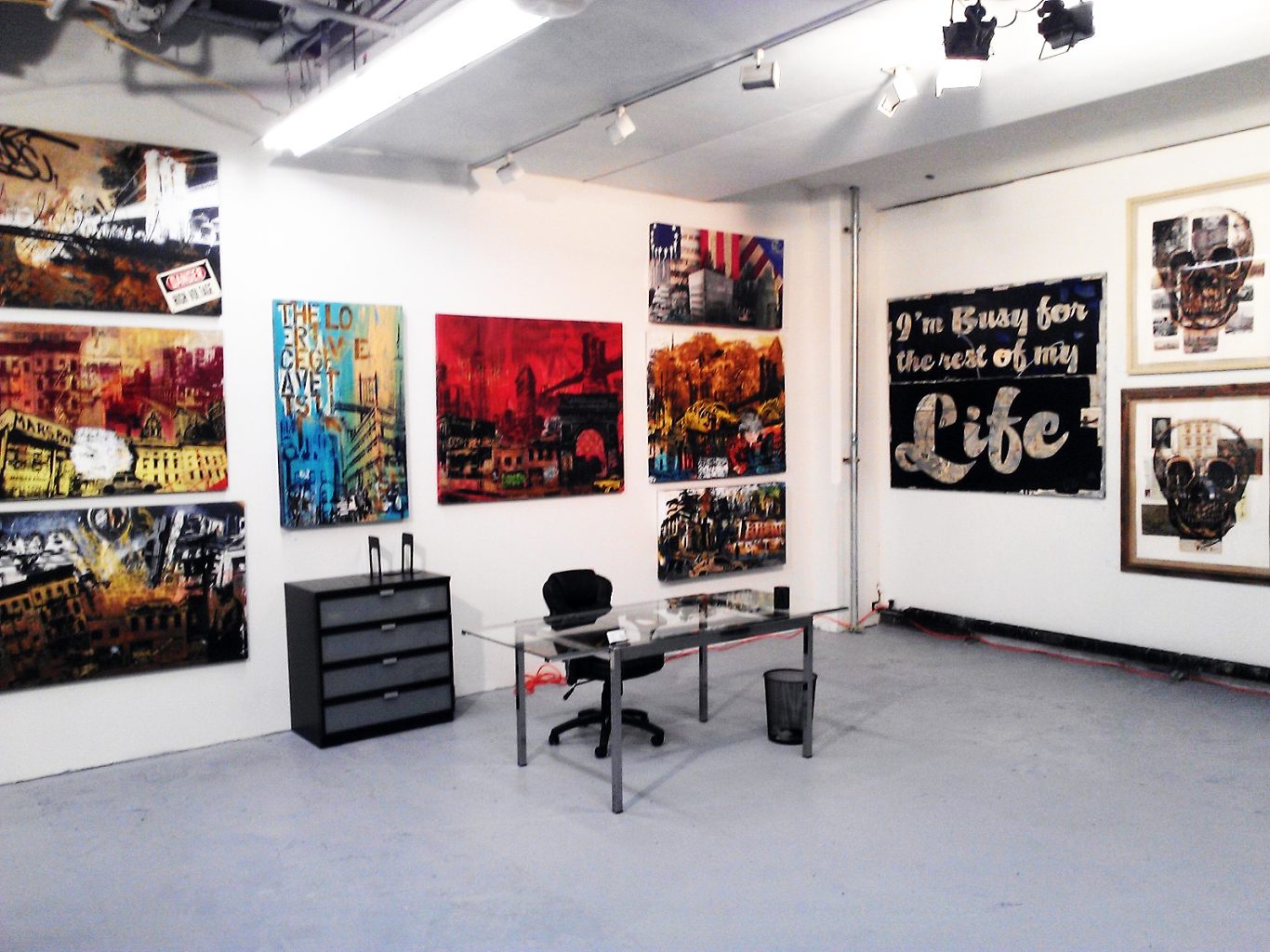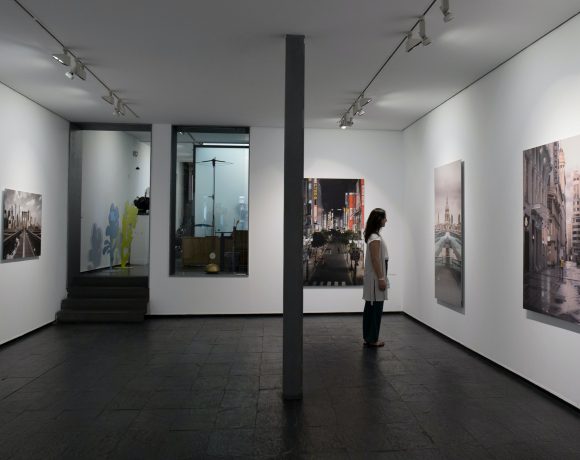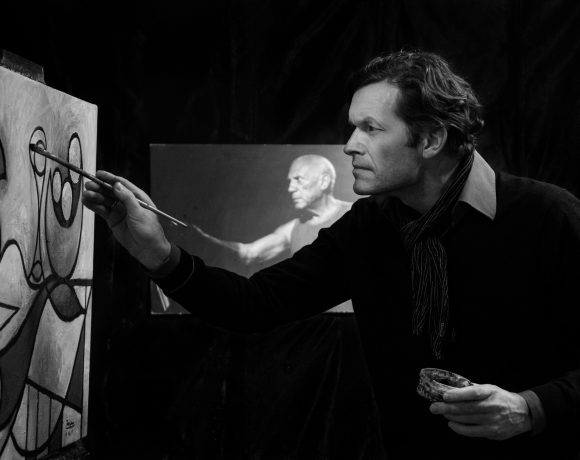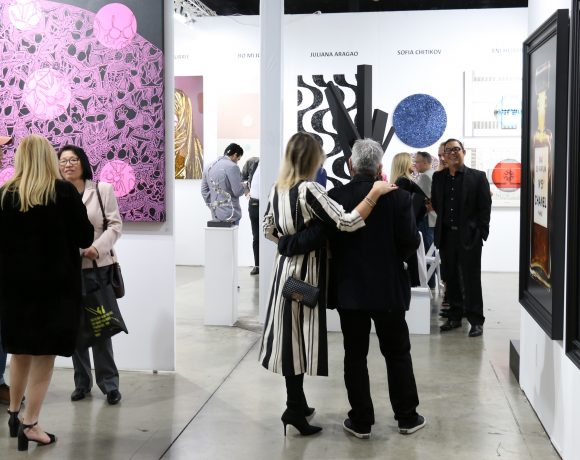A roundtable discussion of artists’ most-asked questions
by Terrence Lynch
“How do I get my work into an art gallery? What can a gallery do for me? What would a gallery ask of me?”
There comes a point in most artist’s careers when he or she confronts the question: “Can I make a living at this?” Perhaps he’s had success at local amateur shows or fairs. Perhaps an storm of creativity has left them with a body of work that makes her think, “I’ve got something here.” Then the question becomes whether it’s time to take the next professional step and get the work into an art gallery. But how to start?
ABN recently asked three respected art dealers the kind of bare-bones questions an emerging artist would ask. The panel included Jeff Jaffe, founder and owner of Pop International Galleries in New York City; Gary Handler, director and co-owner of Vinings Galleries of Roswell and Smyrna, Ga., and Eric Smith, publisher of this magazine and veteran of over 25 years in the industry. Their comments have been edited for length and clarity.
“The art of business and the business of art are very intertwined,” says Jaffe as we start the conversation.
ABN: What are the benefits in working with galleries?
Smith: First you have a retail location. Galleries take care of sales. They have art consultants working in the gallery. They’re knowledgeable, they have a skill set that most artists don’t carry. The skill set is sales. It maximizes the time of an artist.
Jaffe: We’re the intermediary between the artist and the public. Unless you’re independently wealthy, it’s very difficult to market your work broadly, appropriately, and professionally–that’s the role of galleries. Galleries introduce artists and help to develop their careers. Here at Pop International, we have a very real mission in terms of how we represent artists. We represent them fiercely and protectively. We do everything we can to help their careers grow, because as their careers grow, so do we.
Handler: Once an artist is “found” at a gallery, it just takes [the work] up a level– that this is not just a festival artist. Somebody on a professional level in this business thought enough about this artwork to represent it in their gallery. The work takes on a whole new meaning.
ABN: What services do galleries perform for an artist?
Jaffe: People love wandering around, popping into galleries and looking at art. That’s what we do, but galleries also educate people. People who’ve never bought a piece of art may wind up buying a piece of art for the first time, because of the gallery doing its job.
Smith: They do the marketing. They make calls to see if customers like the art they’ve bought. They go to people’s houses to hand art on the wall. The question brings up the idea of accounts receivables: how many artists are painting until three o’clock and then say, “I’d better make some calls and track down some of my money”? Galleries do that every day.
Jaffe: We do go to clients’ homes regularly. We do install art. We’ll bring pieces for them to look at in their homes. It gives us a big handle on what their collections are about. That gives us a lot of information. Artists don’t have that. Gallerists have access to the clients. That’s the point.
ABN: What about pricing the work?
Smith: You’ve got to be realistic about the effort put into the work, and the amount of return you can live with. I’ve written an article about this which you can find at artexponewyork.com, “Pricing101.” You’ve got to be realistic about the market–that’s another place where a knowledgeable gallerist can help.
Handler: In today’s business climate, artists need to be prepared to go into a consignment relationship. The artist produces the prices. There should be a minimum amount that the artist is going to get. One of the advantages of working with galleries is that you have trained salespeople. Our goal to maximize revenue for everyone.
Jaffe: Typically, galleries buy prints and consign originals. That’s the norm.
“As a tip to any artist, be prepared. Have a body of work.”
ABN: That brings up the issue of how art is supplied to galleries…
Handler: There’s no set answer to that. We have some relations where we work directly with the artist. We have other relationships where we work with the publisher. It depends on where the artist is in his or her career. It could be an artist that’s hitting the streets themselves, and selling the work themselves, or have they been discovered by a publisher. Then it morphs into something totally different.
Jaffe: Artists supply directly, they can have a direct relationship with a gallery. Or, they can have an agent that’ll be an intermediary to supply art. Or they can work with a publisher, where you give up a certain amount of your autonomy and have somebody else market for you, print for you, etc.
Smith: Publishers are aggregators, people who have a stable of say five to 50 artists. They can manage the artists’ careers so they don’t have anything to do but paint or sculpt. That’s the benefit of working with publishers–there’s more of a business atmosphere. In my opinion, everybody should work at what they’re best at. Artists are best at painting, or sculpting, blowing glass, or whatever.
ABN: For an artist, can there be a downside to working with a galley?
Handler: The obstacles? It’s obvious. There’s having to share a portion of your sales with a gallery. Shipping, decisions on framing, who pays for this–who pays for that…If you’re becoming popular with a gallery and that gallery starts to host you as one of their featured artists, there’s pressure to produce. And once you get into one gallery, you’re going to get into others and you’ve got to have the confidence that if you can do it here you can do it there.
ABN: How many pieces should an artist have before starting to look for a gallery?
Smith: As many as possible. If you’re an artist who only paints 12 pieces per year, you can only work with one gallery, because you don’t have enough original work to spread out to say, four galleries. If I were an artist painting 12 pieces per year, I would do reproductions or limited-edition prints of six to eight of those pieces. That would maximize my talent. And I would do low numbers of editions, maybe 15-20.
Jaffe: As a tip to any artist, be prepared. Have a body of work. Show something that you’ve been working on for the last five years–showing something that you’ve been working on for the last three months isn’t going to get you gallery representation. Gallerists and art dealers and galley owners are looking for a comprehensive, cohesive body of work.
I happen to be an artist myself. I sit squarely on both sides of this business. As an art dealer, I can tell you that I reject thousands of artists a year that don’t have a solid portfolio. They make a couple of nice pieces and they think that they should have a gallery represent them. It just doesn’t work that way.
Handler: When I get on board with an artist, I want to make a visual impact [in my galleries]. I need a minimum–a minimum–of six to eight pieces from that artist. If it’s an artist we do well with, we’re going to want ten to 12 to 14 pieces of art on the wall.
“Part of the beauty of being an artist is selling your work to someone who appreciates it.”
ABN: What do artists need to appreciate about galleries as businesses?
Jaffe: Galleries have huge expenses. Artists have to participate in helping to mitigate those expenses by being “sellable.” And the more you sell, the more you have to have on hand. Galleries won’t invest the time and the effort of marketing and developing an artist if there’s no supply. It’s a good sign when you walk into a gallery and you see an artist has a huge chunk of wall in a gallery–it’s because they’re selling well.
Handler: We just had a situation with an artist. They brought their work into the gallery, and it was beautiful work, but I felt that they were asking significantly too much for it. I said, “it’s not that the artwork’s not worth it, but in my gallery right now we don’t have the numbers of that type of client walking through our doors. We’re not making lots of sales at that price point. Are we making sales at that price point? Yes. But they’re few and far between. But at thisprice point, that’s our wheelhouse right now. This is where we’re selling successfully. These artists who are selling at this price point have a track record with us. We’ve been able to bring them up and increase their prices.” It takes time to cultivate those relationships. And patience.
ABN: How should artists pick galleries to work with?
Smith: Tough question. If you go with a publisher, the publisher already knows the galleries. There’s always [the approach of ] tucking your work under your arm and walking in their door, or writing them a letter, or sending them some sort of a quirky gift that they open and it takes them to your website, so you get noticed, things like that.
The other way is to participate in art fairs. Whether it be the local art fair or ArtExpo New York, that’s how you get your work seen, that’s how you put your hand in someone else’s hand and say, “let me show you my work.” That’s by far the best way to find galleries to work with. Gallery owners attend these fairs.
Jaffe: It takes a lot of legwork, research. You have to walk into galleries and look at what they’re hanging. See if there’s a some kind of simpatico relationship between what you have and what they’re selling. Not that it should be the same or similar, but that it there should be a relationship, a thread.
Most galleries represent a certain kind of artwork. If you’re a pop artist, you wouldn’t want to walk into a gallery that works with realism. If you’re a still-life painter, it would make no sense to walk into Pop International Galleries. You want to find a solid place where you can develop a relationship with the art dealer and see that there’s a particular place [for you] in that gallery. Takes time and effort and energy. I tell artist that they should look at hundreds of galleries and narrow it down to 15 and then select three–and then go after them.
Handler: The gallery has to have a good reputation. How would the artist know that? Ask for references. That’s not a crazy thing to ask for. For artists, they have to be working good-quality galleries that have a reputation for paying their bills. The artist should not be a bank for the gallery. When an artist puts in a piece of work on consignment–when that piece sells and is paid for, then the gallery should report that sale to the artist immediately and pay the artist his share.
“The gallery’s skill set is sales. It maximizes the time of an artist.”
ABN: What about doing shows?
Jaffe: Artists do events because collectors want to meet the artist. Collectors want to have a personal connection to the artists that they collect or buy.
Handler: Absolutely. That’s what connects the artist to the client. That’s one of our missions: to bridge the gap between the artist and the collector, where they can meet and have a relationship and social time together and create that environment where that can happen. Friendships are formed, so you’re not just buying a piece of art off the wall, you’re buying an experience. You’re buying that person–the personality of the artist, so that every time you look at that piece of art it reminds you of that great experience you had with that artist at a show.
Smith: Absolutely. A hypothetical: an artist has eight original pieces and ten prints in their inventory. A gallery takes them on and say six months go by and they sell 20 paintings or 20 prints, whatever, they start selling a little bit of work. After they establish a little bit of clientele, then it’s a good idea to do a show in the gallery and bring in some additional work, because you’ve got a built-in collector base. That’s the way to put on a productive show and broaden your collector base and sell to some existing collectors.
Artists should and you should want to. Part of the beauty of being an artist is selling your work to someone who appreciates it. That’s the really cool dynamic of being an artist and a collector. I can’t paint. But I certainly love talking to those who can. That’s what the art world is all about.












Kamla Ravikumar
11 November
Most galleries like to work with established and known artists to be safe.How does an upcoming artist break through this glass wall created by galleries?Either I have to be terrific in my work for them to want me or I have to go gallery hopping to show them my works.What are the other options?
artist kodankandath antony francis
16 July
Lot of helpful tips for an upcoming and serious artist.Thank you very much.
Sean Taylor
24 May
Galleries and publishers alike prefer digital portfolios or a link to an artist’s website be submitted rather than organic materials that may be lost in the busy shuffle of a gallery or office environment. Artist’s should be aware that many well intentioned submissions are lacking the saleability factor a gallery may be looking for. It could be a matter of the gallery’s customer preferences or just not a time for taking on new art, which is an expensive undertaking for any gallery doing it right. As a gallery director I would review at least 3 artists portfolios each day which would total to hundreds over the course of a year. From that figure I (and the gallery staff, as is my practice) may choose 3 or 4 new artists for representation. Personally I respond to each submission with an email or call but an artist shouldn’t feel insulted if rejected. Keep producing and never rely on making a living with your art until one day you realize that you already are.
Susan Quin Byrd
16 May
As a photographic artist, I hope someone in the gallery business or other fine art photographer who have successfully been through this will read and respond to comments regarding “How To Work With Galleries”. There are many really talented emerging professional photographers who could benefit from responses. My situation and questions are written in my former discussion here. [email protected]
SusanQuinPhotoArt.com
Susan Quin Byrd
12 May
The gallery owners responses to questions about “How To Work With Galleries” was helpful, but as an award winning fine art photographic artist, I would like more detailed information about how to find and approach successful galleries to represent the art of photography. There are many who still do not represent successful photographers. For instance, I am best known for my digital post processing of images into creative or painterly fine art photos with drama, action, emotion and more so that my work is different from other photo artists and well received. I have been doing my do diligence: becoming more known, continuing to educate myself, creating a large body of work, selling it at fine art street shows, Western Museum exhibitions and at the annual 10 week Arizona Fine Art Expo. I am entering photo competitions and winning, been published in National Geographic and Cowboys & Indians Magazines among others and My work is in a few galleries. I also teach my image redefining and post processing techniques to photo students and my tutorials are published in a quarterly photography eMagazine. My passion is photography. I have the eye and am good at it and must make my living with it. I am in the process of updating my website and want to make photo books. So now I need to make some changes and it is time to pursue high end well known galleries that will accept photographic art. So I and some of really good photographer friends and students and I want to know the best methods to find and
approach the right galleries to represent excellent photographic art. What do you suggest?
Richard Bello
8 May
Seeking a serious gallery to rep my works preferably invest in me I have 75 available pieces all life size and four free standing. Here are some samples
https://Bello.see.me
http://about.me/RichardBello
http://www.facebook.com/richard.belloart
http://www.facebook.com/Belloart.com
Thankyou !
Johnny Taylor
21 March
Thank you taking the time to share your insights. I have a few questions and thoughts about artists’ submissions.
I’m an artist fortunate enough to have representation at a handful of galleries that work hard to sell my work. All of those relationships arose out of their finding me, rather than my submitting through a website. Still, I create 70-100 pieces a year and would like to reach a wider market in other cities so I send out a lot of submissions (maybe 50-100 per year). Most of these submissions are through a gallery’s website. Its quite rare that I receive any sort of acknowledgement at all. This has been the experience of many of the artists I spoken with about the practice, too. Even a simple “thanks, but no thanks” would go a long way toward establishing goodwill among the artists who submit.
Most galleries have online forms and a disclaimer stating that they can’t contact everyone, but if they like you they’ll be in touch. Do gallerists actually look at these submissions? If a gallery ignores submissions wouldn’t it be simpler for all involved to state that they’re not currently accepting submissions?
Maybe I’m just cranky, or have an outmoded idea of basic decorum, but its frustrating to follow a gallery’s stated submission procedures only to be ignored.